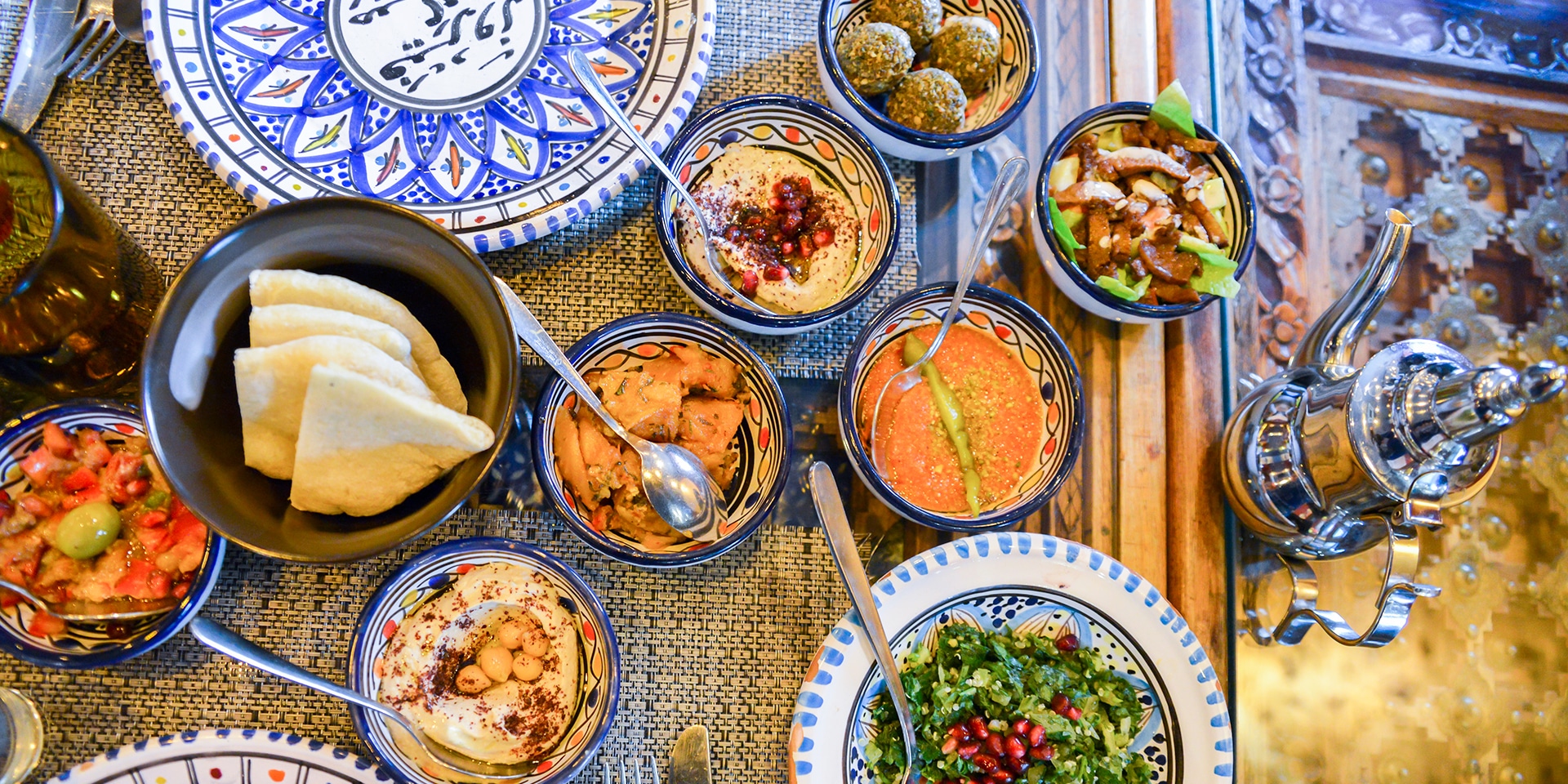Jordanian cuisine
Jordanian cuisine is a traditional style of food preparation originating from, or commonly used in Jordan
that has developed through centuries of social and political change.
There are a wide variety of techniques used in Jordanian cuisine ranging from baking, sautéeing and grilling
to stuffing of vegetables (carrots, leafy greens, aubergine, etc.),
meat, and poultry. Also common in Jordanian cuisine is roasting or preparing foods with special sauces.
As one of the largest producers of olives in the world,olive oil is the main cooking oil in Jordan. Herbs,
garlic, onion, tomato sauce and lemon are typical flavours found in Jordan. Yogurt is commonly served
alongside food and is a common ingredient itself; in particular, jameed, a form of dried yogurt is unique to
Jordanian cuisine and a main ingredient
in mansaf the national dish of Jordan, and a symbol in Jordanian culture for generosity.
Mansaf
What is Mansaf?
There’s a certain Jordanian pride and significance that goes along with mansaf – and once you taste it, and experience a communal meal of it, you’ll know why. Mansaf is a food that runs deep in the culture of Jordan, and when you take your first bite, you’ll actually taste Jordan. There are only a few main components of any platter of mansaf; rice, lamb, jameed (more about this below), and lastly nuts and shrak (a type of bread) are also commonly present.
Makmoura
What is Makmoura?
This is an old Jordanian-oriented dish, eaten mostly by people in North Jordan. Some Jordanians might not even recognize it, nonetheless, it is a traditional Jordanian dish deeply rooted to the country life. Makmoura, meaning buried, is exactly what it sounds like. Boiled chicken and onions are buried under a thick blanket of dough and cooked in the oven until well-done. It is later served in triangle pieces, exactly like cake.
Rashouf
What is Rashouf?
Rashouf is another deeply oriented food tightly linked to the Jordanian culture, and is also served as a winter dish. Adding the same yogurt essence used in cooking mansaf to a blend of lentils, groats, and wheat, is it cooked over medium heat and served with sour pickles and vegetable. Careful though, as beneficial as this dish is, it is also very high in protein and fibers, so don’t eat it and take a nap.
Shorabet Adas
What is Shorabet Adas?
om The famous lentil soup is the official sponsor of every winter in Jordan.Whenever it is cold and rainy outside, Jordanian mothers would immediately start preparing lentil soup—it even goes down as the most ordered dish on restaurant menus during the winter season. This cozy cup of warmth will immediately heat you up, enhance your energy, and strengthen your immune system. Try it hot with toasted bread, a squeeze of lemon juice, and green onions.
Mujadara
What is Mujadara?
Mujadara is a healthy protein-filled dish which is easy to prepare. Raw rice and lentils are cooked together and seasoned with lots of cumin and spices. Some like to add partially burned onions atop their plates, but it is best eaten with yogurt, salad, or both.
Maqluba
What is Maqluba?
Translating to the “turned over” dish, this particular food is more interesting to watch being cooked than eaten. The ingredients are nothing out of the ordinary: rice, potatoes, chicken, and aubergine or cauliflower, all stirred in a big pot. When the cooking is done comes the magical moment; children would gather to watch the Jordanian mother flip the huge pot over a flat plate and then remove it, revealing what looks like a neat cake of rice and chicken.
Mulukhiyah
What is Mulukhiyah?
Jordanians and Palestinians have been living together for decades, sharing blood, traditions and, of course, delicious recipes. Mulukhiyah originated in Egypt from the time of the Pharaohs. Back then it was called mulukiyah, the food of the kings, and was only to be later adapted by Palestinians. Mulukhiyah is a rather odd looking dish that doesn’t quite please the eye on first sight, but will instantly have you head over heels from the first bite.

